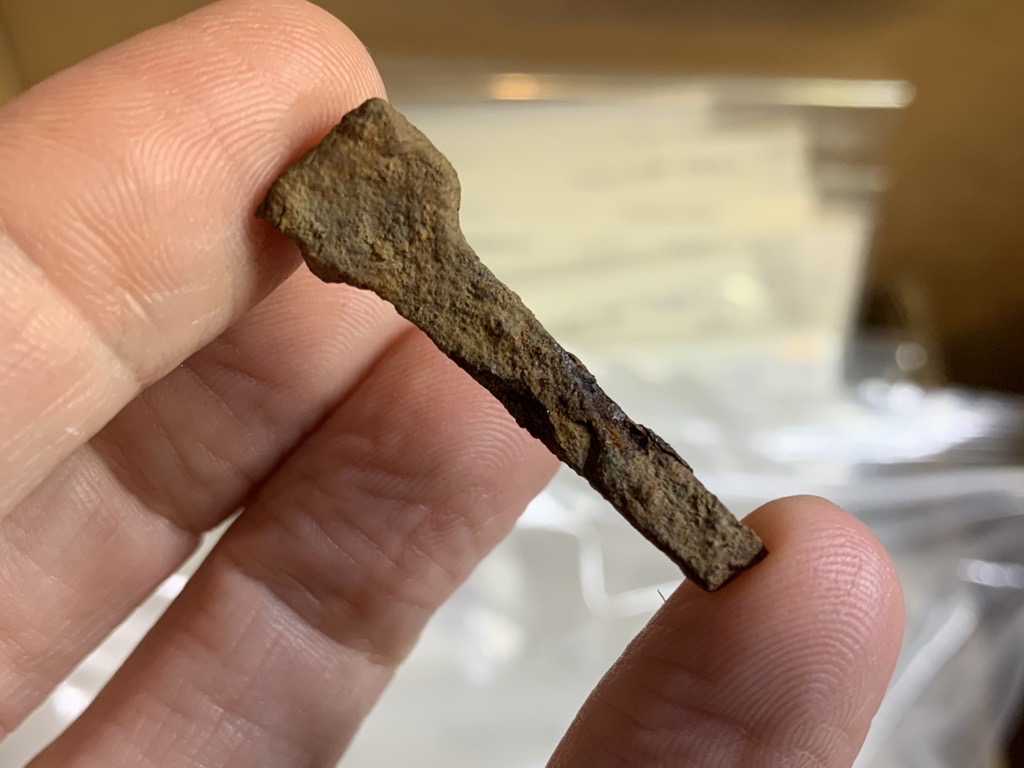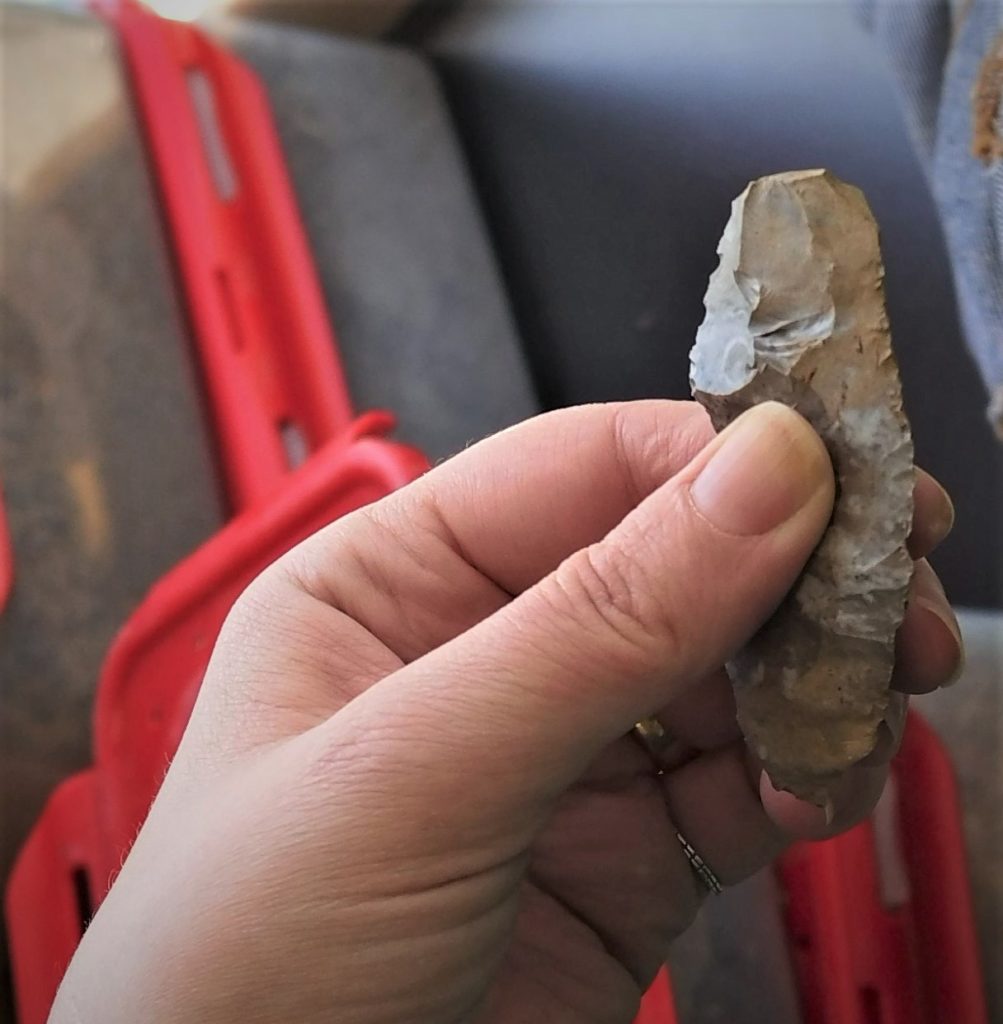The Humble Horseshoe Nail

Nails are common finds on historical archaeological sites in Ontario, including both nails for construction and those used to shoe horses- like the example depicted here. Aside from representing the activity of shoeing a horse, the presence of a large quantity of horseshoe nails can help determine patterns of use on a site. This is […]
Creamware

Creamware is a glazed refined earthenware with a body that ranges in colour from ivory, light cream to straw. The creamy yellow glaze is caused by the addition of copper to a clear lead glaze. During the manufacturing process creamware is fired twice. In the first stage, the vessel is fired to a bisque. This […]
Lustreware

Lustre is a decorative technique that was used on several ceramic wares, including refined white earthenwares, fine pasted red earthenwares, porcelain and stoneware. Lustre decorated wares are created when a thin metallic film is applied over the glaze of a vessel. When fired in a muffle kiln the metallic glaze would fuse to the body […]
Frozen Charlotte

The so-called ‘Frozen Charlotte’ was a popular Victorian era doll made of white bisque porcelain. Its classic version is small and nude, with limbs moulded to the body. The dolls were mass-produced and inexpensive, the smallest version cost a penny. A sought-after toy, they were manufactured by the millions from mid-19th century into the early […]
Ironstone

Ironstone is a type of refined earthenware exhibiting a white, hard, almost vitrified paste, with a white thick glasslike glaze. Ironstone can often be characterized by having a network of very fine crazing appearing underneath the glassy surface. The background colour is white but tends to look blueish grey. Ironstone is often undecorated but may […]
Rockingham

The distinct decorative type known as Rockingham is a result of a combination of two glazes that create a mottled design. Rockingham is highly fired earthenware or stoneware that is generally buff to yellow paste with a brownish glaze. Rockingham can be manufactured in two ways. The first requires the vessel to be dipped in […]
Decalcomania

Decalcomania is a decorative technique in which intricate enameled images were transferred to pottery vessels. The first experimentation with decals occurred in 1830s Europe but it wasn’t until the 1870s that manufacturers in France made significant improvements to the technology leading to its perfection at the close of the nineteenth century. The term decalcomania means the […]
Don Mills

A Bold Vision between The Forks How Modern Design Helped Shape a Community’s Character Don Mills Crossing is a unique place within the City of Toronto, featuring an expansive, iconic modernist architecture. Created in answer to the growing Toronto population during the post-war period, Don Mills and Flemingdon Park developments were designed as complete neighbourhoods […]
Left Handed Stone Knife

A Lithic Analyst’s Ode to a Stone Knife The loss of a favourite pocket knife was an alarming incident for many a young boy or girl growing up. Maybe it was the perfect whittling knife we carried with us as Scouts or Guides, or a “coming-of-age” gift from Grandpa. Nevertheless, in a few days we […]
Projectile Point with Embedded Fossil

This projectile point fragment was discovered during field walking and it contains the extra surprise of a tiny, fossilized bivalve shell embedded inside the grey and white chert. Because were are missing the base and tip of this point, we can’t identify the exact age or style of this tool. It was also found in the middle of a small […]


